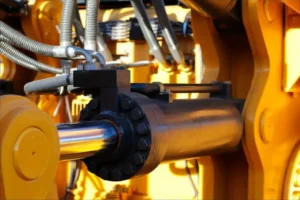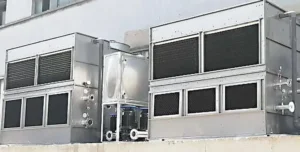1. Nguyên tắc thiết kế và làm việc
- Lò nung cảm ứng không lõi:
- Design: In a coreless induction furnace, the induction coil itself is the primary component used to generate the magnetic field. There is no magnetic core (such as iron or steel) inside the coil.
- Nguyên tắc làm việc: The coil generates an electromagnetic field that induces currents (eddy currents) in the metal, heating it through electrical resistance. The metal is heated directly without the aid of a core.
- Cored Induction Furnace:
- Design: A cored induction furnace includes a magnetic core (usually made of iron or steel) placed inside the induction coil. The core helps focus and concentrate the magnetic field generated by the induction coil.
- Nguyên tắc làm việc: The core serves as a pathway for the magnetic field, which can lead to a more efficient coupling of the electromagnetic field with the metal, allowing for better energy transfer at lower frequencies.
2. Dung tích
- Lò nung cảm ứng không lõi:
- Dung tích Range: Coreless furnaces are typically designed for larger capacities, ranging from small units (1 tấn) to very large units (90 tons or more).
- High-Capacity Use: Due to the flexibility in coil design and power management, coreless furnaces are well-suited for melting larger quantities of metals, particularly in large industrial settings.
- Cored Induction Furnace:
- Dung tích Range: Cored induction furnaces are more commonly used for medium to smaller capacities, typically in the range of 1 ton to 50 tấn.
- Giới hạn: As the capacity increases, the design of the furnace becomes less efficient and harder to scale up due to the challenges in handling large cores and the increased heat and power requirements.

3. Dải tần số
- Lò nung cảm ứng không lõi:
- Dải tần số: Typically operates at medium to high frequencies (1 kHz to 10 kHz). This allows better control over the melting process, faster melting times, and more precise temperature management.
- Cored Induction Furnace:
- Dải tần số: Generally operates at lower frequencies (50 Hz đến 1 kHz), making it more efficient for heating smaller volumes of metal and for alloys that require a slower melting process.
4. Hiệu suất năng lượng
- Lò nung cảm ứng không lõi:
- Hiệu quả: Coreless furnaces tend to be more energy-efficient at larger capacities. The absence of a core allows the induction coil to generate a more uniform magnetic field and reduces energy losses.
- Advantages: Better suited for handling higher power and large amounts of metal, making them more efficient in industrial applications that require continuous, high-volume production.
- Cored Induction Furnace:
- Hiệu quả: Cored furnaces are typically less energy-efficient than coreless furnaces when it comes to larger batches because the core adds resistance to the system. At smaller scales, they are still efficient, but scaling up presents challenges in energy management.
- Advantages: More efficient for specific, smaller applications that don’t require the power and precision of larger furnaces.
5. Melting Speed
- Lò nung cảm ứng không lõi:
- Melting Speed: Due to the higher frequencies and design, coreless induction furnaces generally offer faster melting speeds, especially at larger scales. This is particularly beneficial in industries where quick processing is required.
- Cored Induction Furnace:
- Melting Speed: Cored furnaces typically have slower melting speeds due to their reliance on lower frequencies and the additional magnetic resistance from the core. The melting process is more gradual, making them ideal for certain alloys that require a more controlled approach.
6. Kiểm soát nhiệt độ
- Lò nung cảm ứng không lõi:
- Kiểm soát nhiệt độ: Provides better control over the temperature of the metal. The higher frequency and absence of a core allow more precise temperature regulation, making it ideal for materials that require specific temperature ranges or high-quality metal.
- Cored Induction Furnace:
- Kiểm soát nhiệt độ: Temperature control is generally less precise in cored furnaces, primarily because the core limits the ability to adjust the electromagnetic field effectively. Tuy nhiên, it still offers reasonable control for medium-scale operations.
7. Các ứng dụng
- Lò nung cảm ứng không lõi:
- Các ứng dụng: Suitable for large-scale industrial melting operations where high power and melting efficiency are needed. Common applications include:
- Steel and alloy production
- Large foundries
- Scrap metal recycling
- Non-ferrous metal casting (nhôm, đồng, thau)
- Các ứng dụng: Suitable for large-scale industrial melting operations where high power and melting efficiency are needed. Common applications include:
- Cored Induction Furnace:
- Các ứng dụng: Typically used for smaller to medium-sized metal melting operations, especially for alloys that benefit from the slower melting process. Common uses include:
- Melting ferrous and non-ferrous metals in smaller quantities
- Alloying and special casting operations
- Applications where lower-frequency melting is preferred (ví dụ., nhôm, copper alloys)
- Các ứng dụng: Typically used for smaller to medium-sized metal melting operations, especially for alloys that benefit from the slower melting process. Common uses include:
8. Advantages and Disadvantages
| Tính năng | Lò nung cảm ứng không lõi | Cored Induction Furnace |
| Advantages | – Higher efficiency for large-scale melting | – Better for smaller batches with slower melting requirements |
| – Faster melting speed and precise temperature control | – Simpler and cost-effective for medium/small operations | |
| – Suitable for a wide range of metals and alloys | – Good for alloys requiring gradual heating | |
| – Better suited for industrial applications and large-scale foundries | – Easier to maintain for small-scale operations | |
| Nhược điểm | – Higher initial cost due to power requirements and infrastructure | – Less efficient for large-scale operations |
| – More complex design and maintenance | – Slower melting speeds | |
| – Requires more space and cooling systems | – Limited scalability for larger operations |
Phần kết luận:
- Lò nung cảm ứng không lõi: Best suited for large-scale operations, cúng dường higher hiệu suất năng lượng, faster melting speeds, Và better control over the process, especially when dealing with large volumes of metal.
- Cored Induction Furnace: More cost-effective for medium to small-scale applications, cúng dường good efficiency for lower power requirements but with slower melting times and limited scalability for large volumes.







